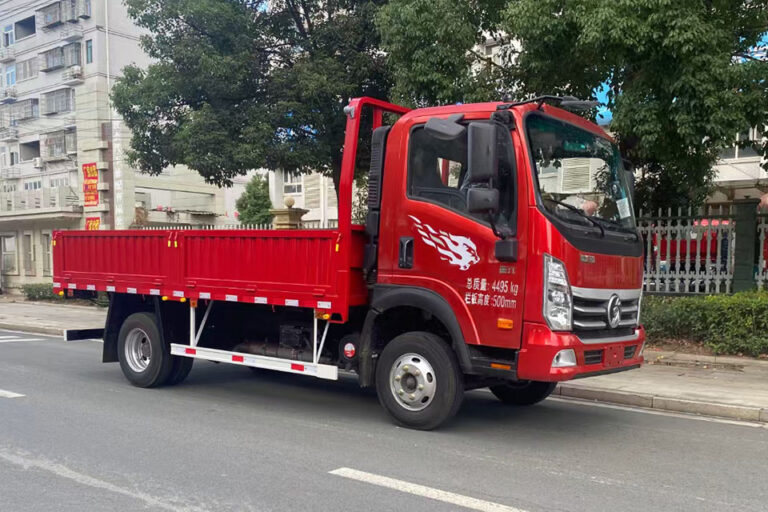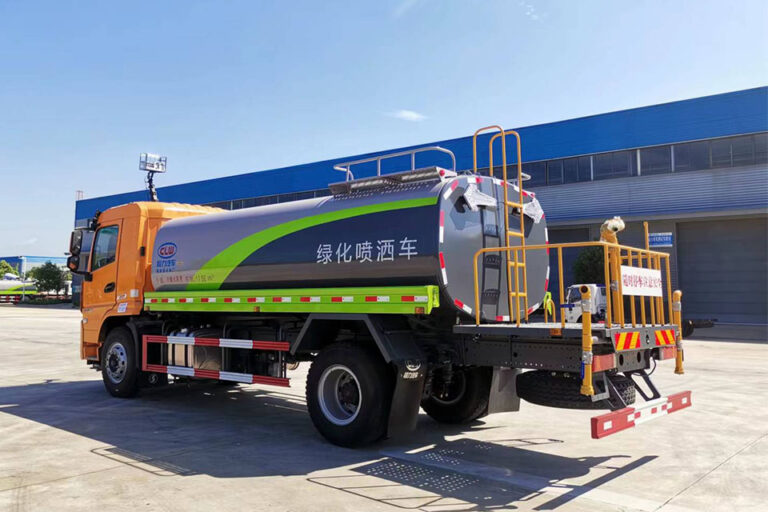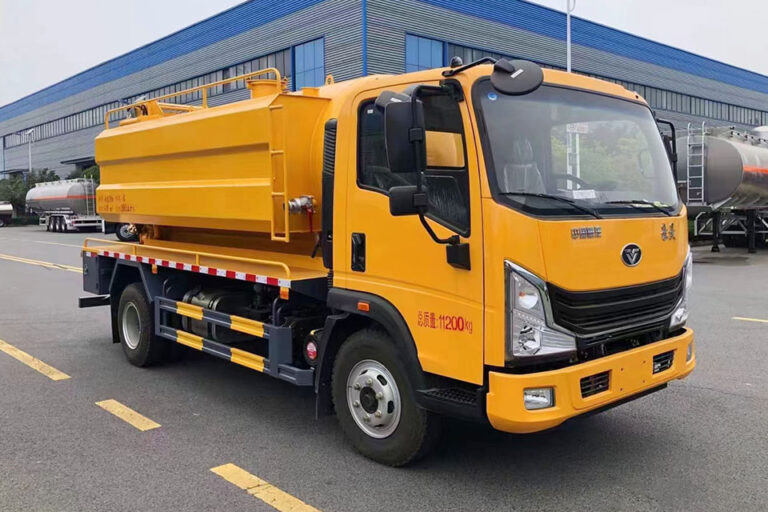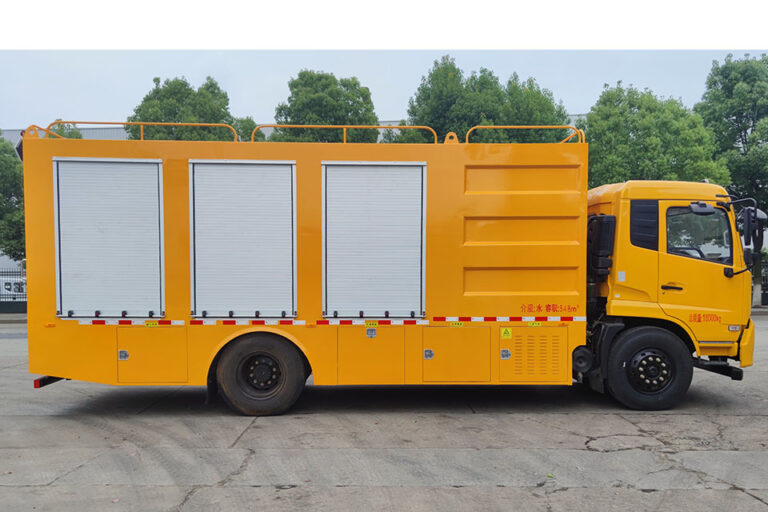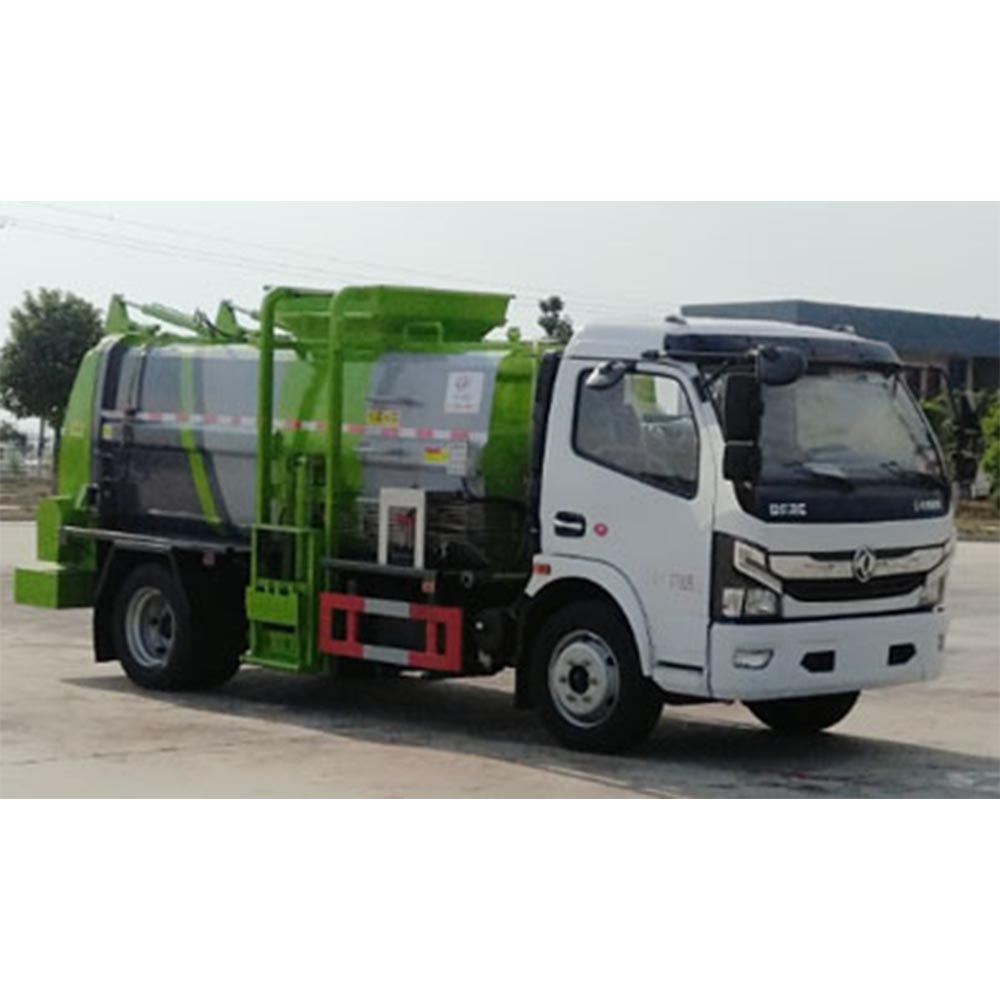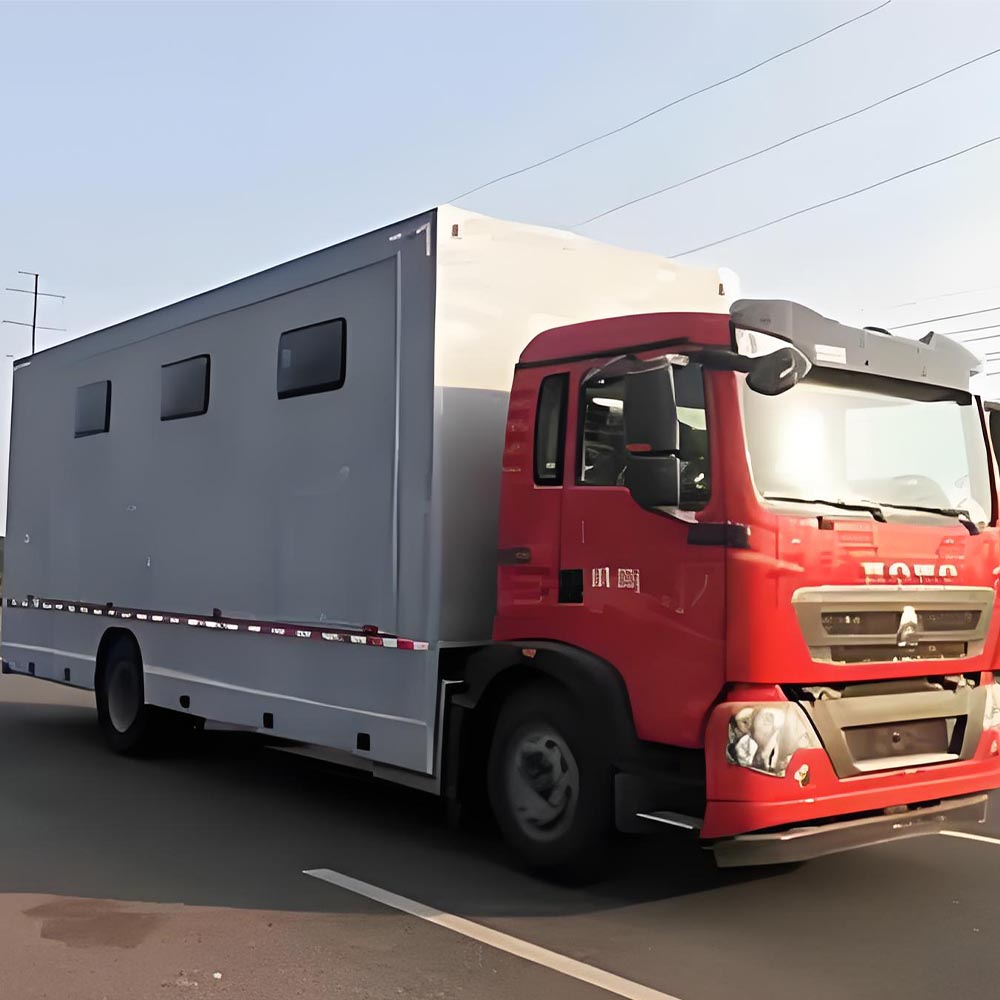-
Chengli Automobile Industry Park

Discussion on the technical status and development trend of loading mechanism of self-loading garbage truck
Modern Loading Mechanisms for Self-Loading Garbage Trucks: Technology and Trends
In today’s clean cities, garbage trucks do much more than just haul trash. Self-loading garbage trucks make waste collection faster and easier. These special trucks can pick up trash bins all by themselves! Let’s look at how they work and what’s new in this field.
Table of Contents
What Is a Self-Loading Garbage Truck?
A self-loading garbage truck has parts that can grab, lift, and empty trash bins without workers having to do the heavy lifting. This helps:
- Make trash collection quicker
- Keep workers safer
- Pick up trash more neatly
These trucks have a truck body, a garbage compartment, and special loading mechanisms that do all the work.
Types of Loading Mechanisms Today
There are two main kinds of loading mechanisms on these trucks:
Side-Loading Mechanisms
Side-loaders pick up bins from the right side of the truck. This works well because in many countries, trucks drive on the right side of the road.
These come in two types:
- Linkage-driven: Uses arms with joints
- Chain-driven: Uses chains to pull the bins up
Both types use hooks or claws to grab the bins. Let’s see how they compare:
| Feature | Hook-and-Plate | Claw-Grip |
|---|---|---|
| How it works | Hooks grab the bin rim | Claws squeeze the whole bin |
| Bin placement | Must be very exact | More forgiving |
| Extra help needed | Worker must position bin | Can work automatically |
| Complexity | Simple | More complex |
| Side-loaders are simple but can only handle 120L and 240L bins one at a time. This makes them good for in tight spaces. |
Garbage Truck Loading Mechanisms: A Comparison
| Feature | Side-Loading | Rear-Loading |
|---|---|---|
| Bin Sizes | 120L, 240L | 120L, 240L, 660L |
| Bins Per Cycle | 1 | Up to 2 |
| Complexity | Low | High |
| Ideal For | Narrow Streets | Larger Loads |
Rear-Loading Mechanisms
Rear-loaders are mounted at the back of the truck. They have more room to work with, which makes them more versatile.
Types of rear-loaders include:
High-Position Rear-Loaders
These lift bins up to the top of the garbage compartment. They use:
- Single hydraulic systems
- Double arm mechanisms
- Cam systems for smooth motion
Low-Position Rear-Loaders
These empty bins at a lower height and use conveyor systems to move trash into the main compartment.
The big advantage of rear-loaders is they can handle more bin types:
- 120L plastic bins
- 240L plastic bins
- 660L large bins (which side-loaders can’t handle)
Many rear-loaders can even lift two bins at once, making them perfect for busy routes or when using heavy-duty construction vehicles as base platforms.
Comparing Loading Mechanisms
Here’s how the different systems stack up:
| Feature | Side-Loading | Rear-Loading |
|---|---|---|
| Bin sizes | 120L, 240L | 120L, 240L, 660L |
| Bins per cycle | 1 bin | Up to 2 bins |
| Space needed | Narrow streets OK | Needs more room |
| Maintenance | Easier | More complex |
| Leakage prevention | Good | Excellent (sealed tailgate) |
| For areas with many large bins, rear-loaders are often better. But for narrow streets with smaller bins, side-loaders work well. |
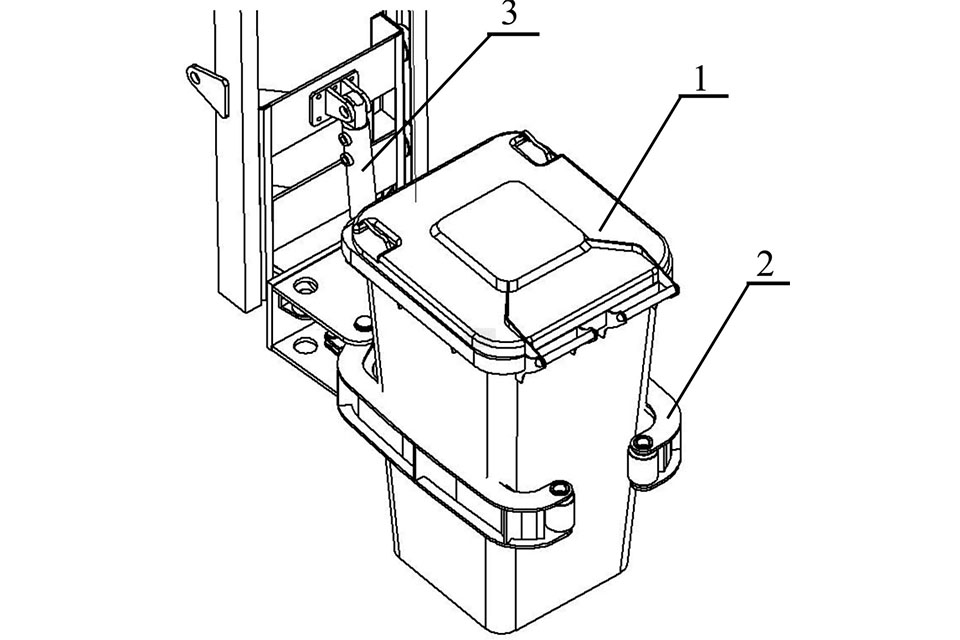
Key Design Points
When making these loading mechanisms, engineers must think about:
- Bin compatibility – Making sure the grabber fits the bin perfectly
- Motion control – Creating smooth lifting motions
- Weather protection – Keeping rain and leaks contained
- Durability – Building parts that last through thousands of lift cycles
Like self-loading fire trucks, these vehicles must be reliable in all conditions.
What’s Coming Next?
The future of garbage truck loading mechanisms looks exciting! Here are the big trends:
1. Smart Automation
Future trucks will use cameras and sensors to:
- Find bins automatically
- Line up perfectly without human help
- Adjust to different bin types on their own
This will make garbage collection possible with just one driver instead of a driver plus helpers.
2. Waste Classification Systems
As more cities sort trash, trucks will get smarter about what they collect:
- Color recognition to identify bin types (recycling, compost, trash)
- Barcode scanners to track which homes are recycling properly
- Weight sensors to measure how much waste each home produces
These features will connect to smart city systems, similar to how mobile emergency units share data.
3. Multi-Function Features
Loading mechanisms will do more than just lift bins:
- Built-in scales to weigh trash
- Disinfection systems to clean bins after emptying
- Compactors to crush trash right after loading
4. Eco-Friendly Designs
Like electric street sweeper trucks, future garbage trucks will focus on being green:
- Lighter materials to save fuel
- Electric motors for quieter operation
- Hybrid systems to reduce emissions
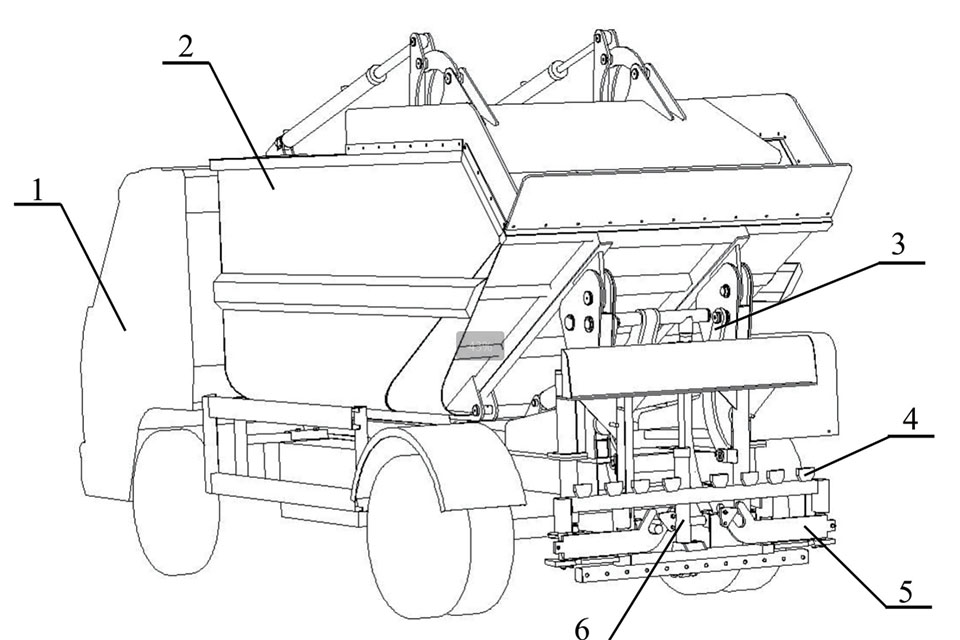
Final Thoughts
Self-loading garbage truck mechanisms have come a long way. Side-loaders are simple but limited, while rear-loaders offer more options but are more complex.
The future will bring smarter, cleaner, and more efficient loading systems. These improvements will make our cities cleaner while making waste collection faster and safer for workers.
Whether it’s a side-loader for tight city streets or a rear-loader for large commercial bins, these machines will keep getting better at their important job – helping keep our communities clean!

